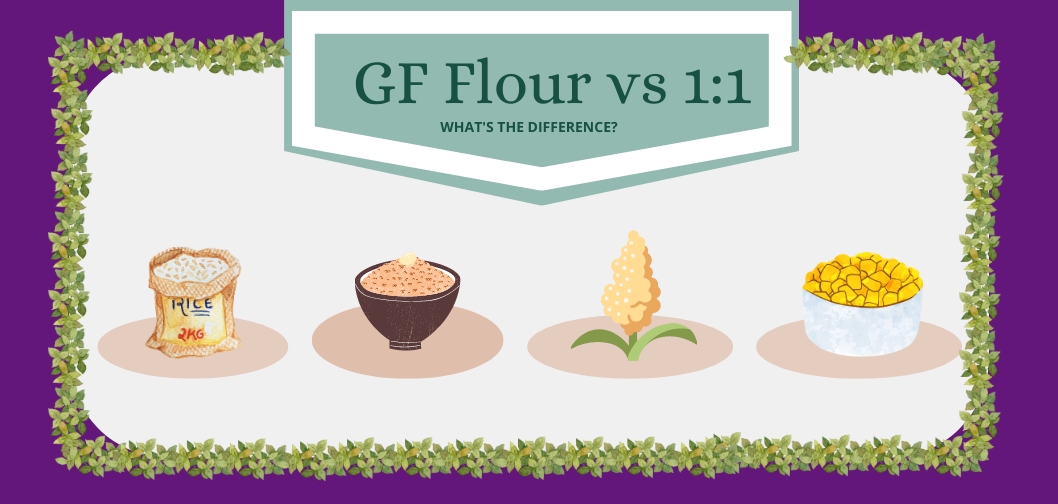What is the difference between gluten-free flour and one-to-one flour? I used to be a good baker, but I just can’t get my GF bakes to come out right.
Great question!
Any flour that does not contain gluten is a gluten free flour. Since gluten only naturally occurs in wheat, rye, and barley, that actually means there are quite a few flours that don’t contain it.
A flour is made from grinding up a grain, seed, nut, or tuber into a fine powder. Rice, buckwheat (which is not even related to wheat), teff, sorghum, tapioca, potato, and corn, for example, can all be ground into flour and are all gluten free (unless there’s cross contamination, but that’s another story). All of these are gluten free flours.
Measure-for-measure, cup-for-cup, or one-to-one flours all mean that there is a mix of various gluten free flours that together vaguely act like wheat flour, the idea being that you are able to replace one cup of wheat flour with one cup of their mixture in a mainstream recipe. Ehhhhh…that kinda works. Except when it doesn’t. And it’s not especially good for yeast baking, except when it is.
Mainstream baking was built around wheat flour being the main ingredient for most baking. As such, the chemical properties of wheat are accounted for and expected. But gluten free, which is usually wheat free*, means that the chemical properties will be different.
Each flour has its own ratio of protein to starch. Each of the proteins and starches acts a little bit differently from each other. Think of the difference between adding cornstarch vs tapioca to thicken a sauce. Similar. Close enough. But not the same. And if you’re going for a specific chemical reaction, there can be a huge difference in results. That same concept goes for all flours.
In short, gluten free baking is a similar yet very different skill from baking with wheat flour. But that’s okay! Put your beginner’s cap on, pretend you don’t know anything (because you really are learning a bunch of new chemical reactions), and go for easy wins at first until you get your feet under you. You’ll get it. But just like with wheat baking, it takes patience and practice to understand how this works.
*There are wheat flours, such as Caputo’s FioreGlute flour, which are wheat flour with the gluten extracted. Such a flour is generally considered safe for people who react to gluten, such as folks with Celiac, but is not safe for people with wheat allergies.


